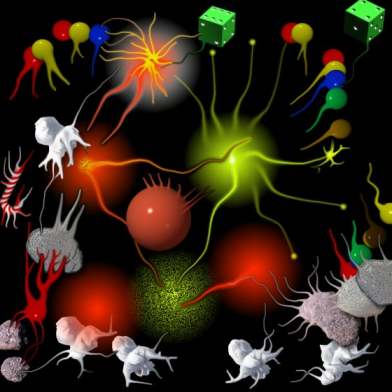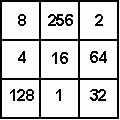 The Zen of Magic Squares – Clifford Pickover
|
 The figure shows a simple magic square with the numbers in each row, each column and each diagonal adding up to 72. The problem here is to convert this square into a multiplying magic square in which the numbers in each row, each column, and each main diagonal multiply together to give the same product. You are not allowed to alter, or add to and of the figures in a cell, but you may shift the two figures within a cell. Thus for example, you might replace 23 by 32 in the top left-hand corner. The puzzle appears to be extremely difficult, but look closely – it is very easy. |
|
Hints and strategies |
|

